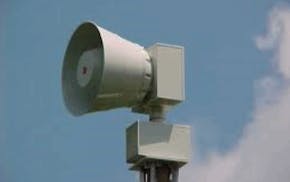A spacing requirement change designed to keep a liquor store from opening near a public school on Hennepin Avenue narrowly won Minneapolis City Council approval Friday.
But the debate also signaled that another spacing rule, designed to keep bars and restaurants serving liquor 300 feet from places of worship, could be history soon. That change lost by one vote only because some council members want public feedback first.
The proposal governing liquor stores was sponsored by Council Member Meg Tuthill, who has fielded complaints over a proposed liquor store that would be located near Jefferson Community School in her ward.
The proposal adopted on a 7-6 vote changes the standard for measuring the 300-foot spacing from between main doors of the two structures to between the nearest property lines. That spacing applies to both schools and places of worship.
That would be sufficient to block Daniel Kerkinni from opening a 2,100-square-foot specialty liquor store in Uptown Square at 2546 Hennepin Av. S. The East Isles neighborhood group has not yet reviewed that proposal.
Some council members said they wanted more information about the impact of the proposal on their wards. Kerkinni said he's disappointed the council didn't wait for that.
Council Member Lisa Goodman said the impact will be limited, given that only a handful of properly zoned locations are available once a requirement to have 2,000 feet between liquor stores is applied. She said that store owners have sometimes shifted main doors to fit the rule requiring 300 feet of separation from schools or places of worship.
Council members who voted against Tuthill's change included Elizabeth Glidden, Betsy Hodges, Cam Gordon, Kevin Reich, Gary Schiff and Robert Lilligren. Kerkinni said he hopes they'll help him ask Mayor R.T. Rybak for a veto.
Schiff proposed dropping the requirement that bars and restaurants serving liquor stay at least 300 feet from places of worship. That proposal lost 7-6, mainly because some council members said they want to hear from constituents.
Schiff said he didn't think the city should be bound by the dry orientation of some religions. "In my church, we drink wine during the service," he said.
Schiff said he'll take up a suggestion by Glidden that he return with his proposal to committee, where she said she may favor it. She noted that a church is buying a former bowling alley at Nokomis Mall on Bloomington Avenue in her ward. She said that would hamper redevelopment efforts by making it impossible for bars and liquor-serving restaurants to locate in the mall. That concern was echoed by others.
Besides Glidden, Sandra Colvin Roy, John Quincy, Hodges, Reich, Diane Hofstede and Lilligren voted down Schiff's motion.
The liquor debate, and one involving restrictions on electronic signs with changeable text or images, pushed Friday's council meeting to almost two hours. That made it the longest session since last August, aside from two fall meetings where property taxpayers testified.
The sign ordinance revisions slightly tighten the zoning rules for such dynamic signs. The key issue Friday was whether such signs should be banned from pedestrian overlay districts. Those are commercial areas with special zoning intended to promote street life and prohibit some auto-oriented uses.
Johnson argued that such signs are more energy efficient and are the wave of the future. "How many things are we going to tell businesses that we can't do in Minneapolis?" Colvin Roy added. But Hofstede responded that pedestrian-friendly entertainment areas such as East Hennepin Avenue are successful because they draw people, not because they have electronic signs.
Steve Brandt • 612-673-4438
![The Minneapolis City skyline including City Hall seen from the back of the U.S. District Court. ] GLEN STUBBE • glen.stubbe@startribune.com Mon](https://arc.stimg.co/startribunemedia/J6LWXC46FXN45KTZZGKPP4WGX4.jpg?h=91&w=145&fit=crop&bg=999&crop=faces)
Lawsuit asks judge to appoint special master to oversee city of Minneapolis violence prevention office
Police ID driver who exited I-94 at 'very high rate of speed' and caused crash that injured 5 in SUV

Siren test fails in Mankato area due to unknown malfunction
